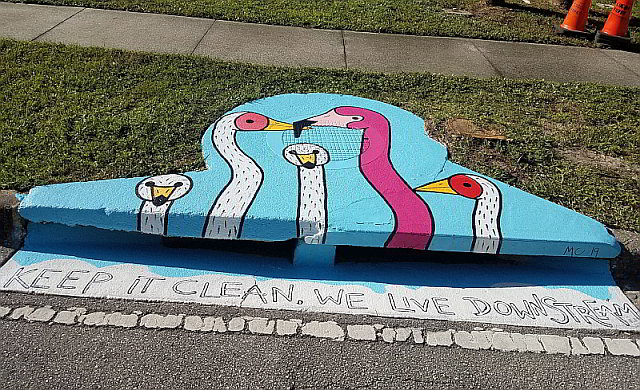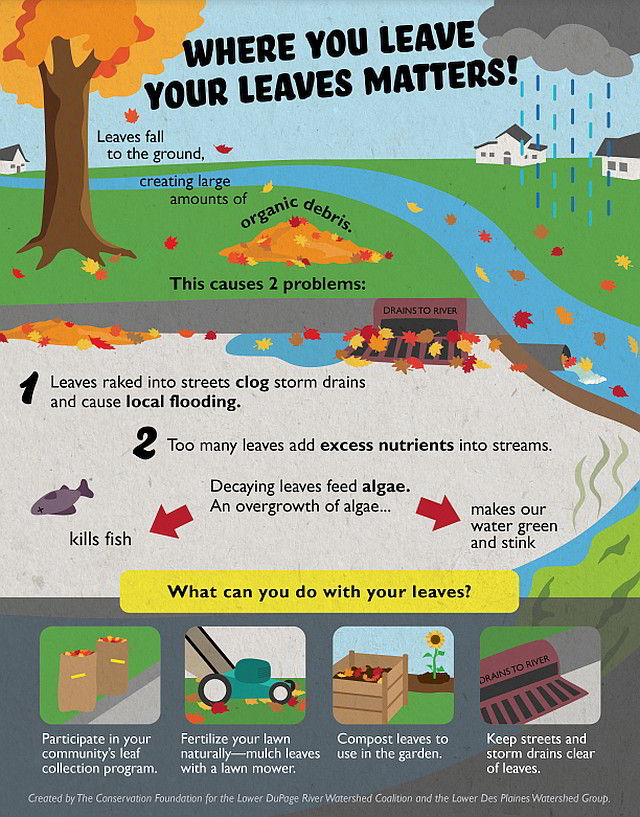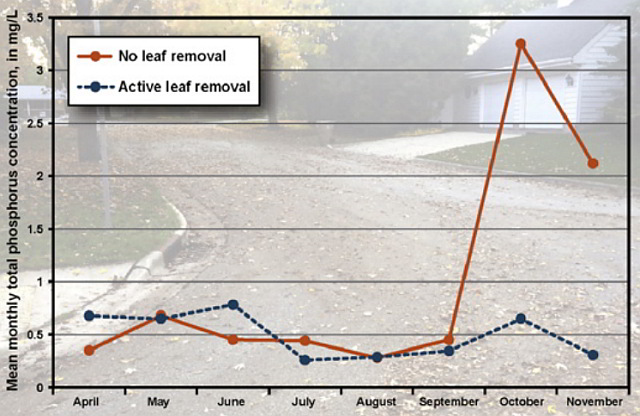IRLNews:2021/01/23/Time to Rake the Leaves
Our local environmental leaders have made great strides with the installation of baffle boxes and stormwater traps that capture debris before it enters the water. These expensive high tech devices effectively filter debris from run-off, but we can not install a baffle box on every IRL stormwater pipe.
Nor can we afford to routinely dredge every residential canal and tributary. Water adjacent property owners must proactively reduce their impact on the estuary. Let's all take advantage of the beautiful Florida weather and rake our leaves BEFORE they end up in the water. In February, IRL = I Rake Leaves.
What You Can Do?
- Stop dumping your leaves and clippings into the canal behind your house!
- Don't blow or rake leaves into the street, ditches, waterways or storm drains.
- Keep all fallen leaves and grass clippings on your property, blow or rake leaves into a pile, and dispose of them properly.
- Mulch leaves into landscape beds, and grass clippings into the yard.
- Compost your leaves away from storm drains, canals and tributaries to prevent nutrient-laden water from entering the waterways.
- Put leaves and clippings out for pickup. Place yard waste containers well away from storm drains.
- Make sure your yard service is disposing of leaves and yard debris responsibly.
All the leaves have fallen...
Results from a 2016 US Geological Survey study performed on two urban lakes in Michigan confirm that leaf litter can be a primary source of nutrients in stormwater, particularly phosphorus. When an active, thorough leaf removal and street cleaning program is in place, total and dissolved phosphorus loads were reduced by 84 percent, and nitrogen loads were reduced by 74 percent, when compared to no leaf removal and street cleaning program.
"The timing of leaf removal is important because of the highly leachable nature of leaves, and significant reductions in loads of the total and dissolved forms of phosphorus and nitrogen can be achieved with removal of leaf litter prior to a precipitation event."(Selbig 2016)[1]
Now is the time for community leaders to run an awareness campaign aimed at keeping leaf debris out of the IRL. Let's use our resources to encourage waterway adjacent communities to mulch, compost, or bag their leaves for proper disposal. Maybe park a yard waste dumpster or two for IRL neighborhoods to use during the cleanup.
Many northern cities have annual leaf removal programs, with incentives to participate, such as planned weekends where residents can rake their leaves to the curb for pickup by vacuum truck and street sweeper. Not having to bag and tote a ton of leaves to the curb is a big incentive for homeowners to get the rake out. Such a program in our older, heavily canopied neighborhoods (ex: Old Eau Gallie, Dixie Highway, Baldwin Park, Melbourne Ave, etc) could proactively prevent tons of debris from ever entering the lagoon.
Now is also the time for our municipalities to sweep every leaf covered street that sends stormwater to the lagoon. During the dry season our streets become covered with not only natural debris, but also automotive fluids, brake and tire dust, litter, micro-plastics, and pet excrement. Encourage your community leaders and public works departments to be proactive, and clean every street that drains to an IRL waterbody, BEFORE the spring rainfall washes our pollution into the water.
Temporarily redirecting street sweepers to concentrate on lagoon adjacent communities won't cost much more than fuel, and it would prevent tons of muck-making debris from entering IRL tributaries and canals. A savvy municipality might even publicize their proactive "I Rake Leaves" campaign to demonstrate how environmentally conscious they are.



